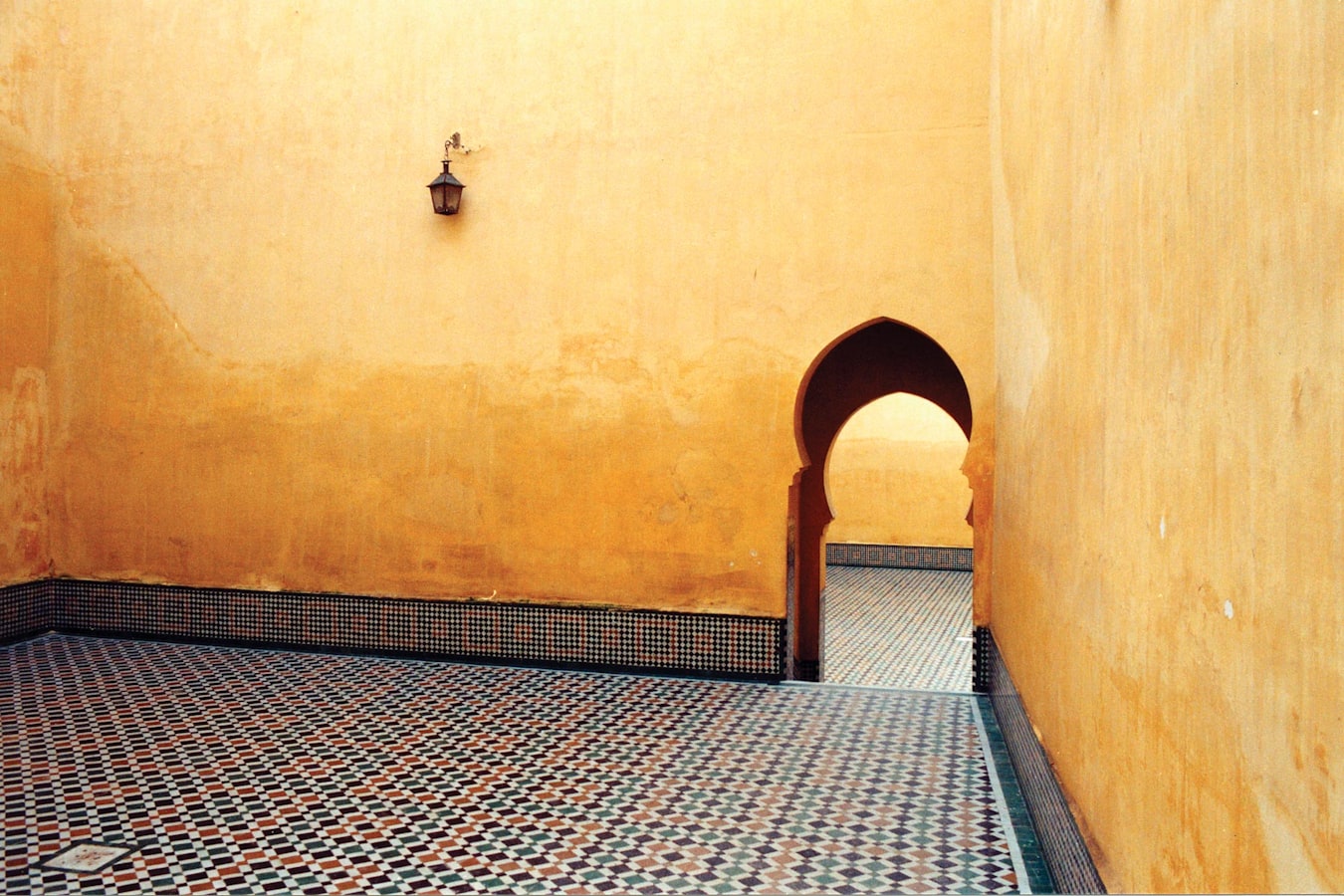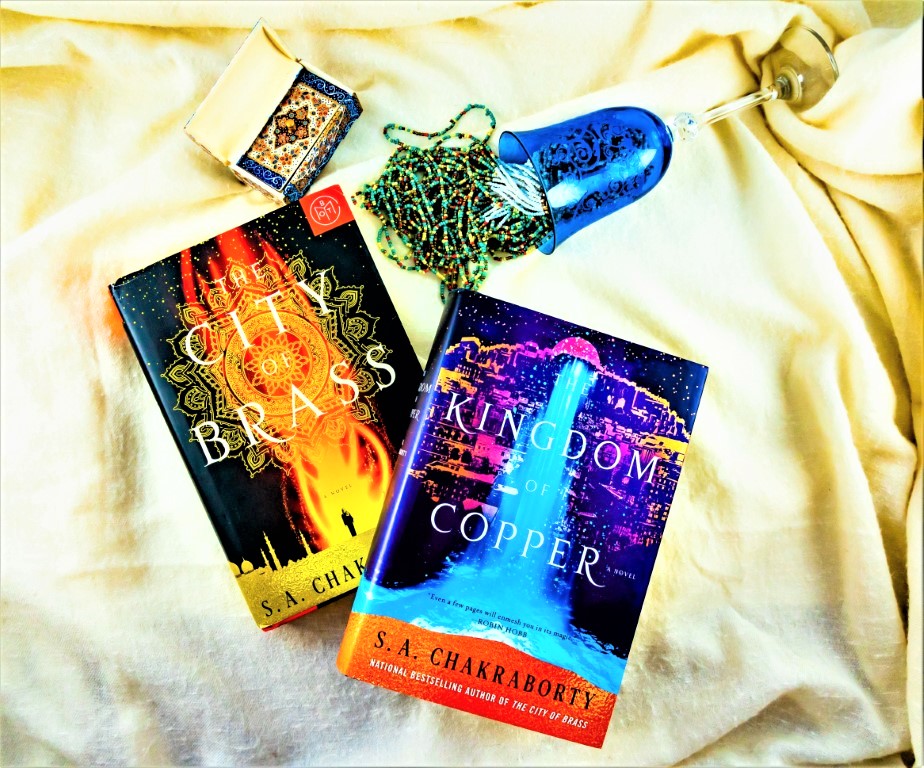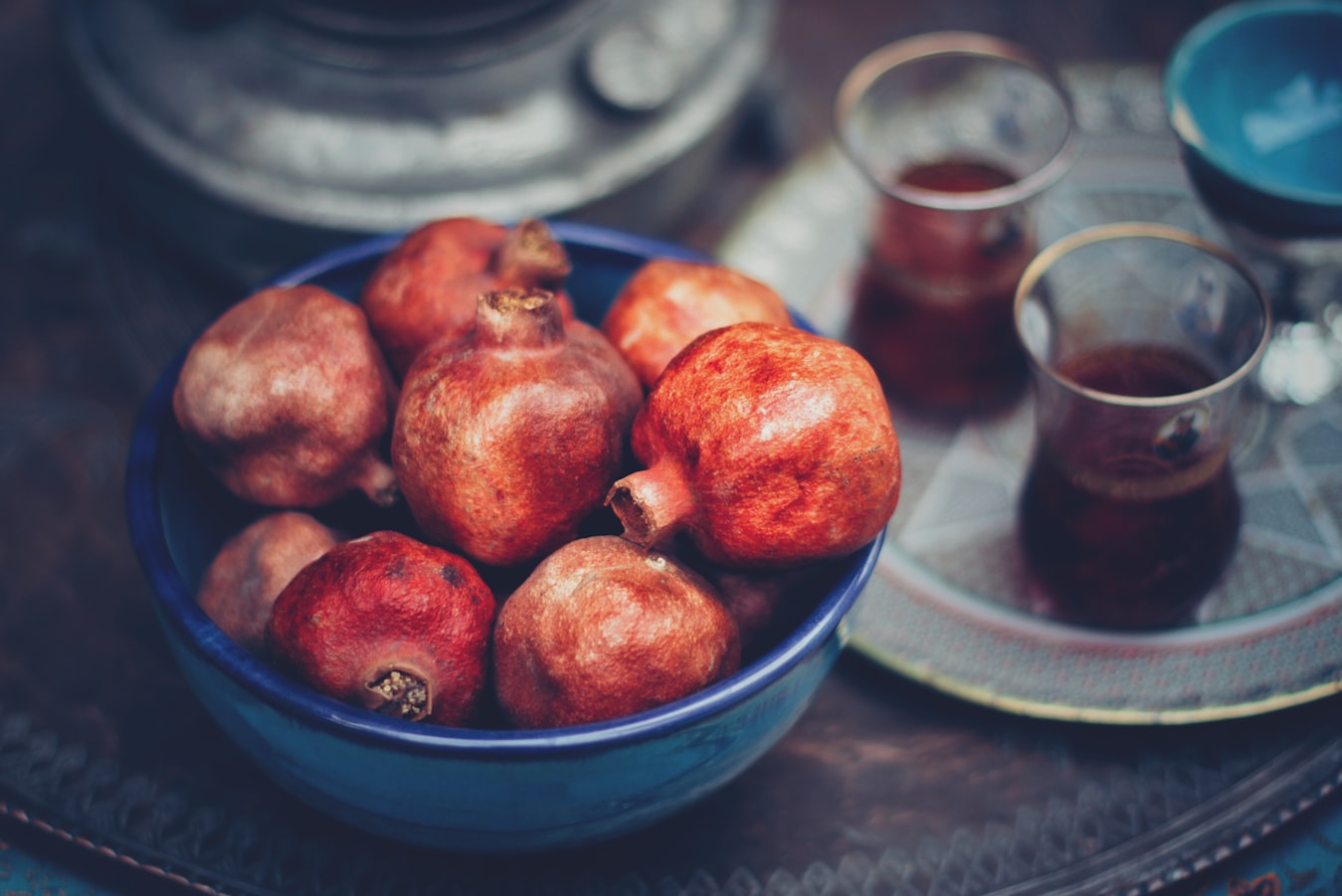I know what you are thinking, “Yet another mediocre fantasy-fiction trilogy? Do we really need more magical worlds?”!
No, we don’t need more mediocre trilogies (this is anything but that). And yes, we always need more magical worlds!
The City of Brass was one of my top reads in 2018. The 2019 sequel The Kingdom of Copper cemented my love for The Daevabad Trilogy. And I can’t wait for the third book – Empire of Gold that comes out in 2020.
Here are the 8 reasons why should read it!
Warning: Mild Spoilers Ahead.
1. Engaging & Complex Plot Line
In The City Of Brass, Nahiri, an orphaned hustler/healer living in the streets of Cairo accidentally summons a handsome brooding djinn, Dara. He tells Nahiri of her magical origins and takes her on a reluctant journey to Daevabad, the magical city the djinns call home. Meanwhile, in Daevabad, Prince Ali from the ruling house of Al Gezira, finds himself torn between his socialist ideals and his father’s politics.
Daevabad is the melting pot of several djinn tribes and has a bloodied history of its own. Established by the Daeva tribe (who happen to be Nahiri’s ancestors) it was overthrown by the Qahtani’s of the Geziri tribe many centuries ago, the two tribes living together begrudgingly ever since. Thrown in the mix are the human half-bloods, Shafits, who live a poor and desperate life in this city. At the start of our story, Ali finds himself embroiled in city politics much against the will of his father, King Ghassan. Nahiri’s arrival to Daevabad further complicates matters.
The purpose of the first novel is to set the stage for the characters and the politics of Daevabad. The Kingdom of Copper takes over after the dramatic events of the first novel. We find our three main characters, Nahiri, Ali and Dara, leading different paths. Politics, palace intrigue, and magic are amped to a whole another level and if I share more, I will give the plot away.

2. The Magical World
Chakraborty takes the charms of Arabia and superimposes on it a magical world that is beautiful yet scary. It’s teeming with smokin’ djinns, cold ghouls, peris (winged creatures) and water spirits. The magic of this world isn’t charming or cute, it pulses with energy and danger.
The landscape moves from the crowded, dusty streets of French Cairo to the swampy, hazy quarters of Daevabad. Cursed lakes, magical weapons, flying boats, enchanted palaces abound.
3. Representative Fiction
So if you didn’t catch earlier, the Daevabad Trilogy is based in the Middle-East and Central Asia. It’s really refreshing to read a fantasy fiction that takes on a significant and surprisingly unrepresented population. I mean, we are talking about the land of The Arabian Nights!
Chakroborty has done her research and borrowed heavily from Islamic and Eastern mythology. My personal favorite is how detailed and loyal she has stayed to the attire and food of the middle east.
As a reader of mostly western literature, it takes some time to accept our heroine is chador wearing magical super-healer. Our brave and valiant Prince Ali wears a dishdasha, carries a Zulfiqar, prays 5 times a day and stays away from women. This book also makes you realize how much of our superhero imagery is created by the western world.
Religion plays a significant part in the narrative and there is an underlying reference to the overthrow of Persia (Daevas) by the Islamic (Geziris) rule. The story itself is set in the time of the French occupation of Egypt. It’s important to note that this is not a literary gimmick by Chakraborty. She is a white convert to Islam, and our literary choices portray her real desire to share her understanding of this word.
4. Interesting Multi-dimensional Characters
I have no idea how Chakraborty did it, but she has managed to make every single character interesting.
There is Nahiri who goes from being a small-time hustler to a survivor of palace politics and a leader for her people. Dara’s internal struggle with his past and guilt over his crimes color every action he takes. Ali’s black and white clarity of purpose continues to put him at odds with everyone in this grey world. King Ghassan’s cunning behavior provides room for speculation.
And is Muntadhir really the lazy, debauched prince that he pretends to be? Is Zaynab a dumb pretty princess brought up in a man’s world or does she have real power? Are the Shafit rebels bleeding hearts or fanatic terrorists?
You just want to keep reading and looking for these answers.
5. Real World Relevance
All the magic aside, The Daevabad Trilogy is essentially a socio-political drama. The Daevas were the founding and the ruling tribe of Daevabad. Drunk with the power granted to them by the human prophet Suleiman, their abuse and massacre of the much-hated shafits finally led to the rebellion by Zayadi Al Qahtani from Al Gezira. His descendants have ruled Daevabad ever since.
The Daevabad of Nahiri’s time is a tinderbox of power and class struggles between the Daevas. Geziris and Shafits, the peace just barely kept by the dictatorial Ghassan.
Much like the real world, there is no clear enemy. The wealthy and powerful continue to grow on the backs of the poor. Century-old tribal wars continue to haunt the present generation and there seems to be no end to the cycle of revenge.
6. Chemistry Between Characters
Whether you ship the turbulent relationship between Nahiri and Dara or are rooting for the friendship between Ali & Nahiri – the chemistry between the leading characters is off the charts.
And it’s not just the core trio. Ghassan’s relationship with his sons, his prickly dealings with Nahiri, the sibling rivalry between Muntadhir, Ali and Zaynab – every interaction is sizzling with great dialogs and energy.
7. Great Writing
Chakraborty’s beautiful writing makes it so easy to enjoy these books. To give you a taste, here are some of my favorite lines!
“You’re some kind of thief, then?”
“That a very narrow-minded way of looking at it. I prefer to think of myself as a merchant of delicate tasks.”
“Greatness takes time, Banu Nahida. Often the mightiest things have the humblest beginnings.”
“It’s not haunted”. Wajed countered. “It simply… misses its founding family.”
“The stairs vanished under me the last time I was there, uncle,” Ali pointed out. “The water in the fountains turns to blood so often than people don’t drink it.”
“So it misses them a lot.”
“Because a lost little girl from Cairo thought she was living in some sort of fairy tale. And because for all her supposed cleverness, she couldn’t see that the dashing hero who saved her was its monster”
8. Something For Everyone
Flying carpets. Harem politics. Family drama. Exotic Lands. Palace intrigue. Brooding anti-heroes. Spunky heroines. Magical creatures. Power hungry dictators. Class wars. Simmering romance. Treacherous journeys. Assassination plots. And more!
There is a little something for everyone to enjoy in The Daevabad Trilogy – don’t miss it!
For more of our top reads, go here.








2 comments
This is a great summary! I was really struck by the complexity of the politics in book one!
Hey! Thanks for stopping by! I think these books are simply amazing – I cant wait for book 3!